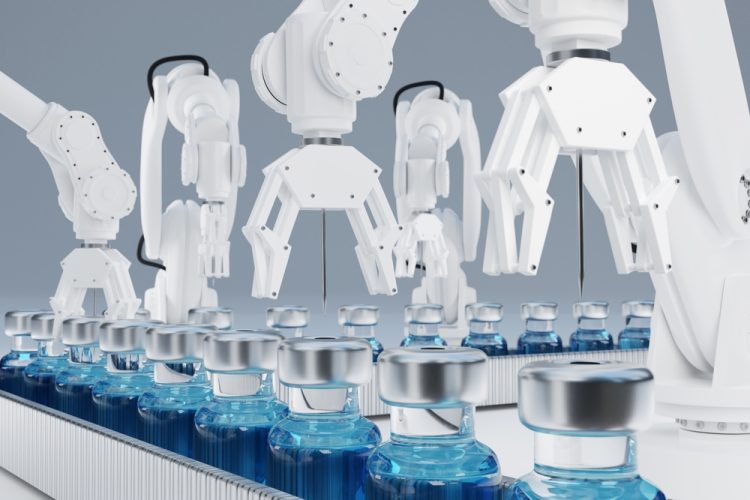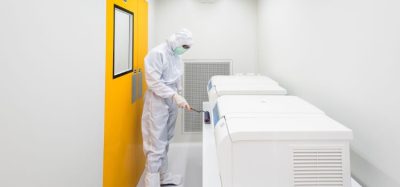Automation to guide technology shift in aseptic environments
Posted: 29 May 2023 | Catherine Eckford (European Pharmaceutical Review) | No comments yet
Referencing Annex 1–2022, a paper has described how automation will be implemented in aseptic environments in view of regulatory requirements.


Recently, the European Medicines Agency (EMA) took the lead in pushing for process improvements using technologies already established in other manufacturing sectors. One of these key technologies is automation, a recent paper explained.
The authors offered clarification on the regulation and technologies to enable the cultural shift in the pharmaceutical environment, particularly within aseptic manufacturing and the use of robotics to fulfil good manufacturing practice (GMP). In the paper, the authors predicted that “… implementation [of continuous processing and robotics] in the pharma field should cause a big change, probably within the next five years.”
Moving towards continuous processing of nanomedicines
Many biotech nanomedicines recently reached the market due to the drive of the COVID-19 pandemic, according to the authors.
Despite this, only 13 nanomedicines had been approved by the US Food and Drug Administration (FDA) before 2015. Yet in 2021, 100 nanomedicines had been marketed. Another 563 new nanomedicines were under clinical trial or in other stages of drug development.
Nanomedicines generally require aseptic processing. As these products are parenteral and according to the GMP are sterile, the costs associated with their manufacturing are high.
Continuous manufacturing in the biopharmaceutical industry guarantees high quality and high process efficiency.
However, in the manufacture of sterile nanomedicines, challenges include the lack of real-time process information, which can impact batch scalability and reproducibility, according to the paper.
Therefore, the industry has worked to successfully develop unit operations capable of handling continuous stream processing, stated Tanzini et al.
Automation and robotics in aseptic environments
Automation
The authors emphasised that in the perspective of the GMP, robotics in aseptic production therefore plays a key role in the demanded technology push, especially in grade A.
In an aseptic environment, a medium to high level of automation allows 24/7 production continuity according to the market needs. Simultaneously, it also guarantees monitoring of operative condition via computerised systems, thus ensuring quality robustness.
In an aseptic environment, a medium to high level of automation allows 24/7 production continuity according to the market needs”
The advantages of automation and robotics is particularly effective in the following of a defined standard of procedure (SOP), perfectly within the GMP scope—reducing the risk of human error, the authors stated.
Robotics
Robots allow the smart management of data, increasing the quality of the batch records. This is because all the robot operations are recorded in detail along with the corresponding environmental parameters and robot status. This enables full traceability along the process, the paper described.
The authors noted that increasing the number of sensors of robots, Big Data related to CPP (critical process parameters) are produced for more in-depth analysis (applying machine learning and AI tools). This allows an early identification of drift trends and manufacturing nonconformities and their causes. In this way, CAPA (corrective and preventive actions) can be taken promptly, limiting the risk of losing control of production quality.
The paper also reported a possible workflow for defining and choosing the parameters of automated cells. This could help identify and overcome potential bottlenecks. For example, key steps identified in the workflow were offline verification of feasibility and cycle time, together with robot simulations of maintenance need.
Tanzini et al. described that while robotics is currently already widely used at the secondary packaging stage, the coming years will see large adoption of robots in aseptic manufacturing environments too.
Significance of Annex 1–2022 for implementing Pharma 4.0
Annex 1 to GMP, released in August 2022, introduces an innovative vision for Pharma”
Annex 1 to GMP, released in August 2022, introduces an innovative vision for Pharma, the paper argued. It provides tools for the process improvements using robotics, which is well-established in other manufacturing sectors.
Automated and robotic technologies in the manufacture of sterile products as stated in the Annex 1–2022 release was highlighted in the paper: “The use of appropriate technologies (eg, restricted access barriers systems (RABS), isolators, robotic systems, rapid microbial testing and monitoring systems) should be considered to increase the protection of the product from potential extraneous sources of particulate and microbial contamination….”
For instance, the benefits of automation with robotics in Pharma are mainly related to HSE (health, safety and environment), quality, and production efficiency.
Robotic technologies are equally beneficial, the authors wrote. These could be involved in the entire production chain: from API (active pharmaceutical ingredients) to final packaging and palletising, and especially the activities in aseptic environments, such as filling.
The entry into force of the Annex 1–2022 release of GMP Volume 4 will characterise the next pharmaceutical industry revolution, Tanzini et al concluded.
Related topics
Active Pharmaceutical Ingredient (API), Artificial Intelligence, Aseptic Processing, Big Data, Big Pharma, Biopharmaceuticals, Continuous Manufacturing, Good Manufacturing Practice (GMP), Lab Automation, Manufacturing, Nano-medicine, Processing, Production, Regulation & Legislation, Research & Development (R&D), Robotics, Technology









